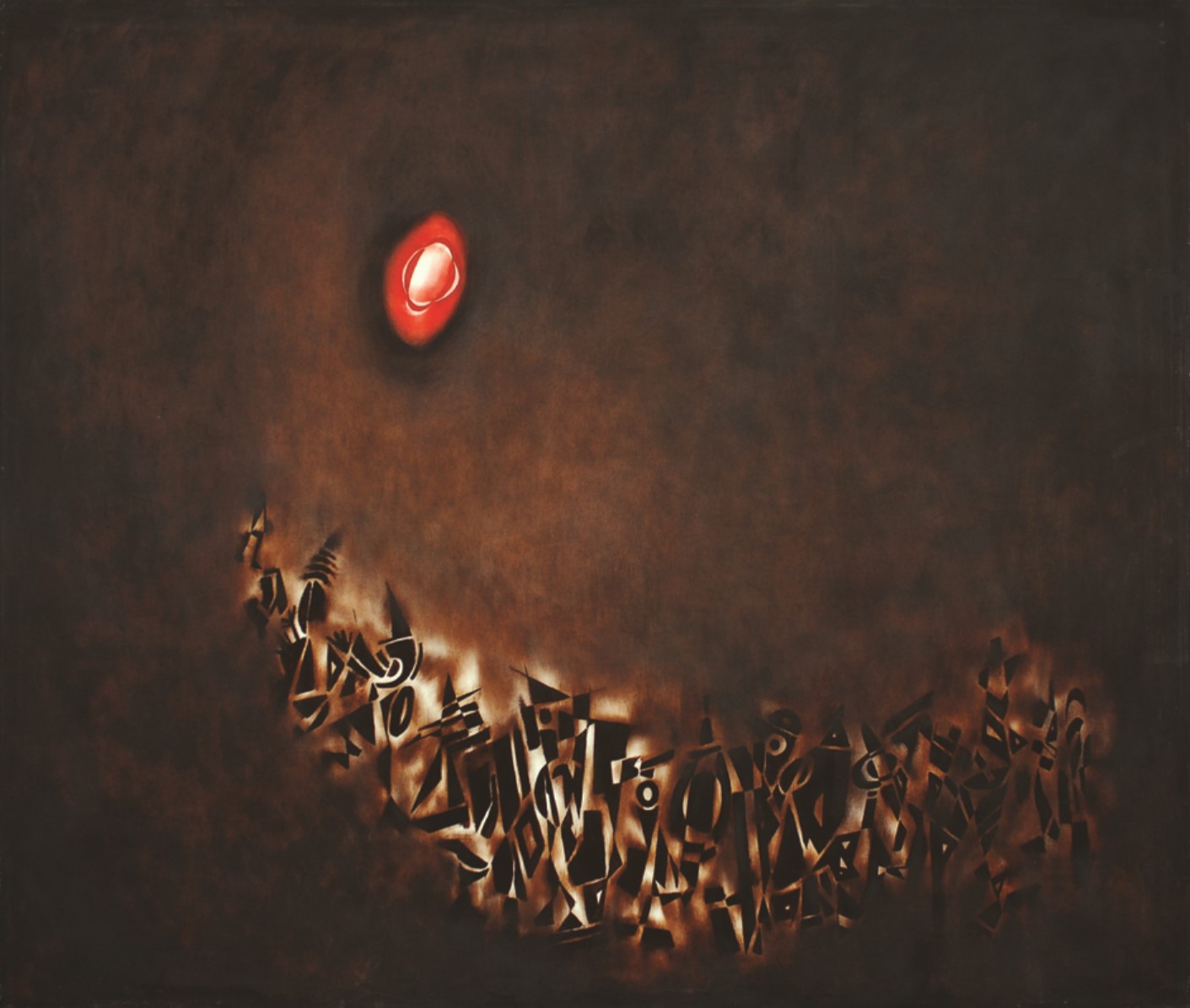LOOK: New World A’Coming by Norman Lewis

Born in Harlem to Black Bermudian immigrants, Norman Lewis began his art career making social realist paintings but after World War II turned increasingly to abstraction. He is known for his rhythmic lines and shapes.
New World A’Coming is one of his later works. In it “a crowd of figures, abstracted in geometric frenzy, gather in processional unity under the glow of a crimson sun,” the Bill Hodges Gallery writes. “Enveloped in a burnt-umber haze, the dark silhouette of the congregation is accented by a bright white glow that seems to emanate from within the crowd”—they are a holy people. The upward curve suggests movement, ascent. It’s as if the people are dancing their way to a new dawn.
LISTEN: “New World a-Comin’” by Duke Ellington, 1943
“New World a-Comin’” by the famous African American jazz pianist, composer, and bandleader Duke Ellington is a single-movement work for piano and ensemble. Ellington premiered the earliest version with his eponymous jazz orchestra at Carnegie Hall on December 11, 1943, with himself on piano. He edited and reprised the piece throughout the years, orchestrating it for symphony orchestra in 1966 (the score is lost) and sometimes performing it as a piano solo without accompaniment. He never made a definitive studio recording of “New World a-Comin’” in its original form, and he never wrote down the piano part.
Above is a recording of the live premiere performance. But here it is, below, with the symphony orchestration, recorded in 1970 with the Cincinnati Symphony Orchestra, directed by Erich Kunzel, and again featuring Ellington as soloist. This recording appears on the album Duke Ellington: Orchestral Works (released on CD in 1989):
Of all the renditions, though, Harvey G. Cohen writes in his book Duke Ellington’s America that Ellington’s unaccompanied solo performance at the Whitney Museum of Art in 1972 may be the most poignant; it’s “searching and delicate,” Cohen says (239).
If you want to see a video recording, here’s Ellington soloing it up at a sacred music concert at Grace Cathedral in San Francisco on September 16, 1965 (view the full concert):
The title of this piece comes from the Peabody Award–winning book New World A-Coming: Inside Black America by the prominent Black journalist Roi Ottley, which documents the daily lives of African Americans in Harlem during the 1920s and ’30s as well as their hope for a better future.
In his 1976 memoir Music Is My Mistress, Ellington wrote, “I visualized this new world as a place in the distant future where there would be no war, no greed, no categorization, no non-believers, where love was unconditional, and no pronoun was good enough for God” (183).
“Musically,” writes Los Angeles Philharmonic content director Ricky O’Bannon, “that hope takes the form of a virtuoso showpiece for Ellington at the piano—unusual for the bandleader and a more-than-capable pianist who preferred showing off his skills as a composer. The beautiful theme and variations are supported with rich overtones and chords that Ellington scholar Mark Tucker describes as reminiscent of Ravel to the point it ‘might be called Fox-Trots Nobles et Sentimentales’ and is first-rate Ellington. Other parts might be evocative of the Romantic sweetness of Rachmaninoff.”
This post is part of a daily Advent series from December 2 to 24, 2023 (with Christmas to follow through January 6, 2024). View all the posts here, and the accompanying Spotify playlist here.
